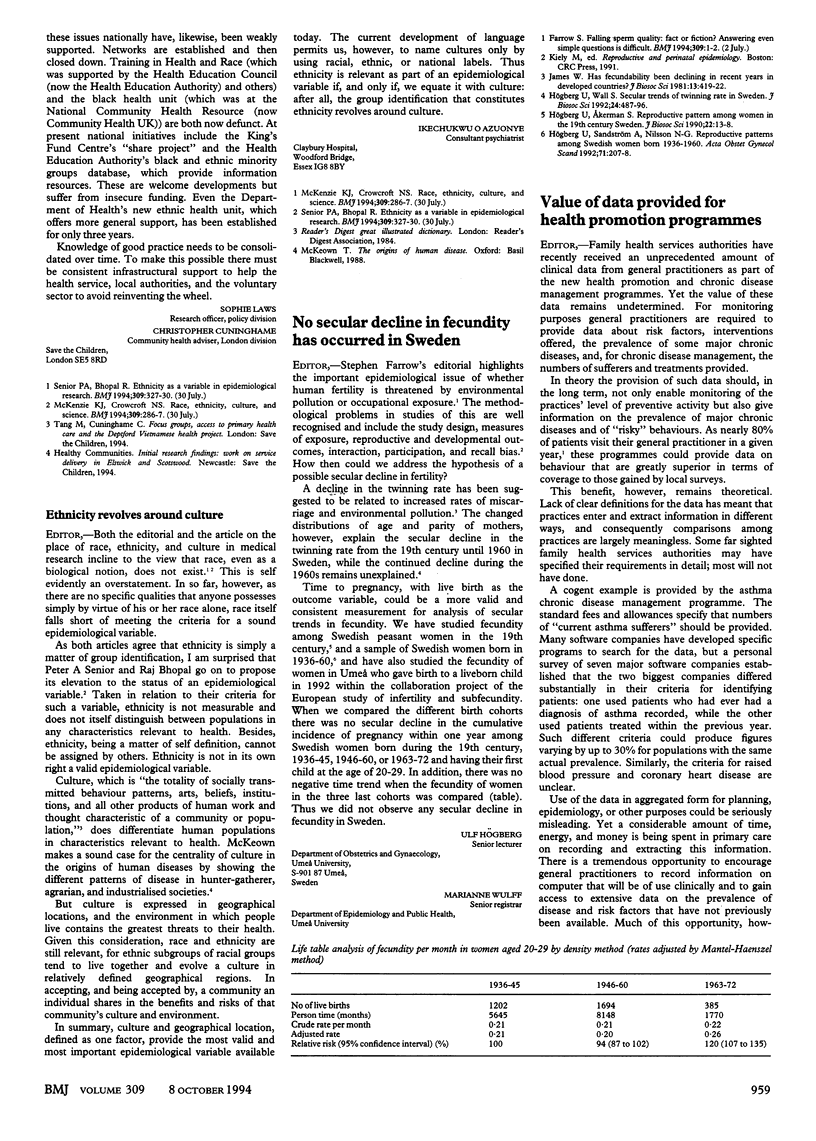Full text
PDFPage 959

Selected References
These references are in PubMed. This may not be the complete list of references from this article.
- Farrow S. Falling sperm quality: fact or fiction? BMJ. 1994 Jul 2;309(6946):1–2. doi: 10.1136/bmj.309.6946.1. [DOI] [PMC free article] [PubMed] [Google Scholar]
- Högberg U., Akerman S. Reproductive pattern among women in 19th century Sweden. J Biosoc Sci. 1990 Jan;22(1):13–18. doi: 10.1017/s0021932000018332. [DOI] [PubMed] [Google Scholar]
- Högberg U., Sandström A., Nilsson N. G. Reproductive patterns among Swedish women born 1936-1960. Acta Obstet Gynecol Scand. 1992 Apr;71(3):207–214. doi: 10.3109/00016349209009920. [DOI] [PubMed] [Google Scholar]
- Högberg U., Wall S. Secular trends of twinning rate in Sweden. J Biosoc Sci. 1992 Oct;24(4):487–496. doi: 10.1017/s0021932000020046. [DOI] [PubMed] [Google Scholar]
- James W. H. Has fecundability been declining in recent years in developed countries? J Biosoc Sci. 1981 Oct;13(4):419–424. doi: 10.1017/s0021932000013675. [DOI] [PubMed] [Google Scholar]


